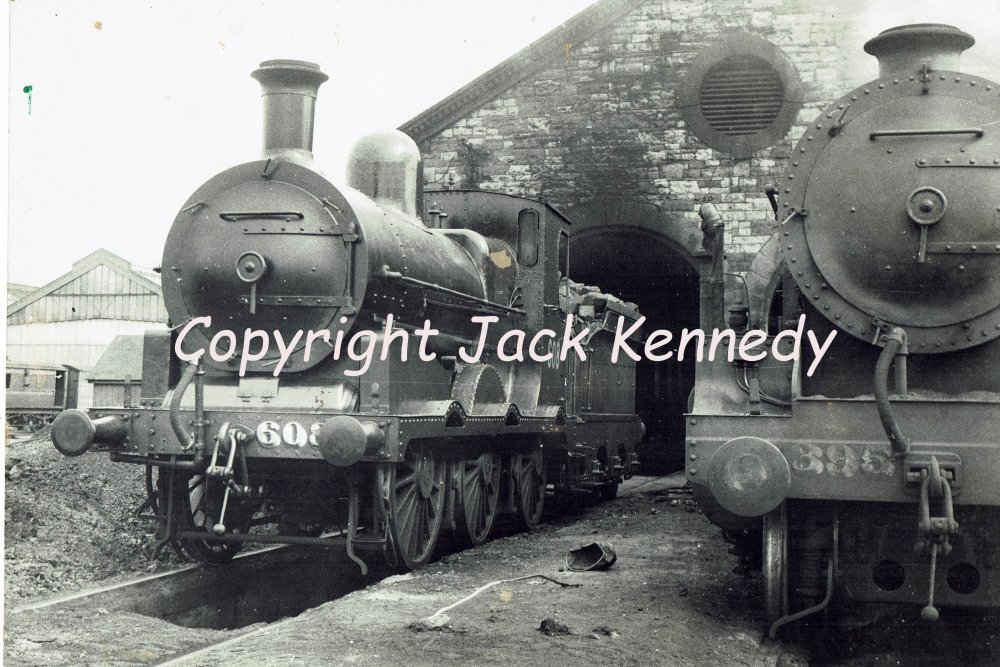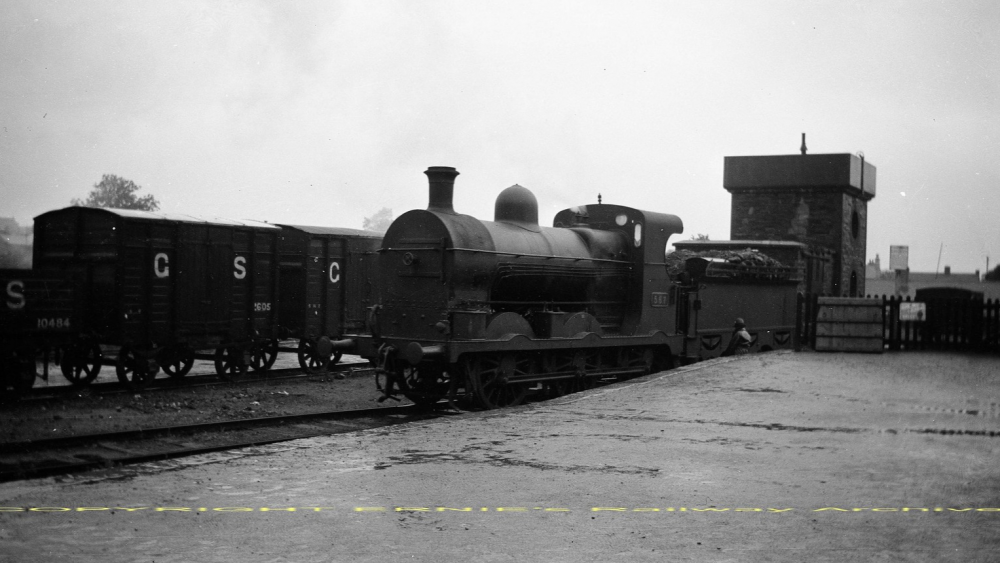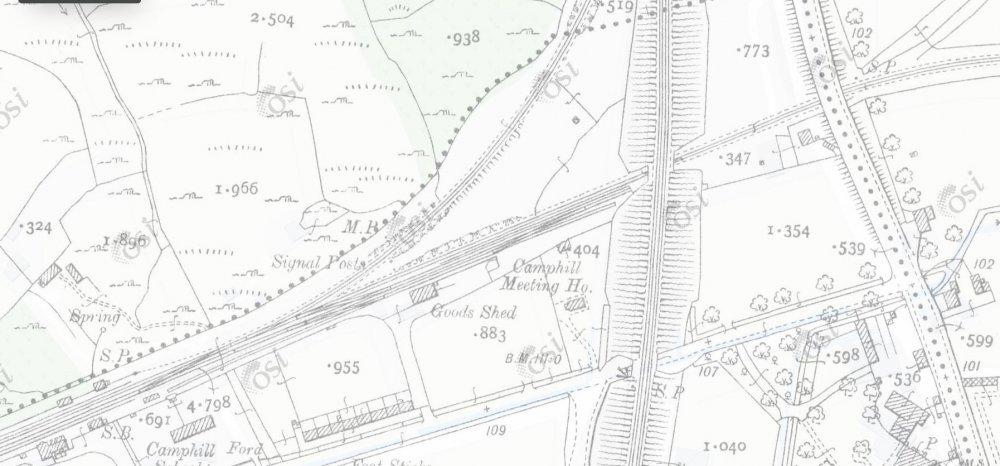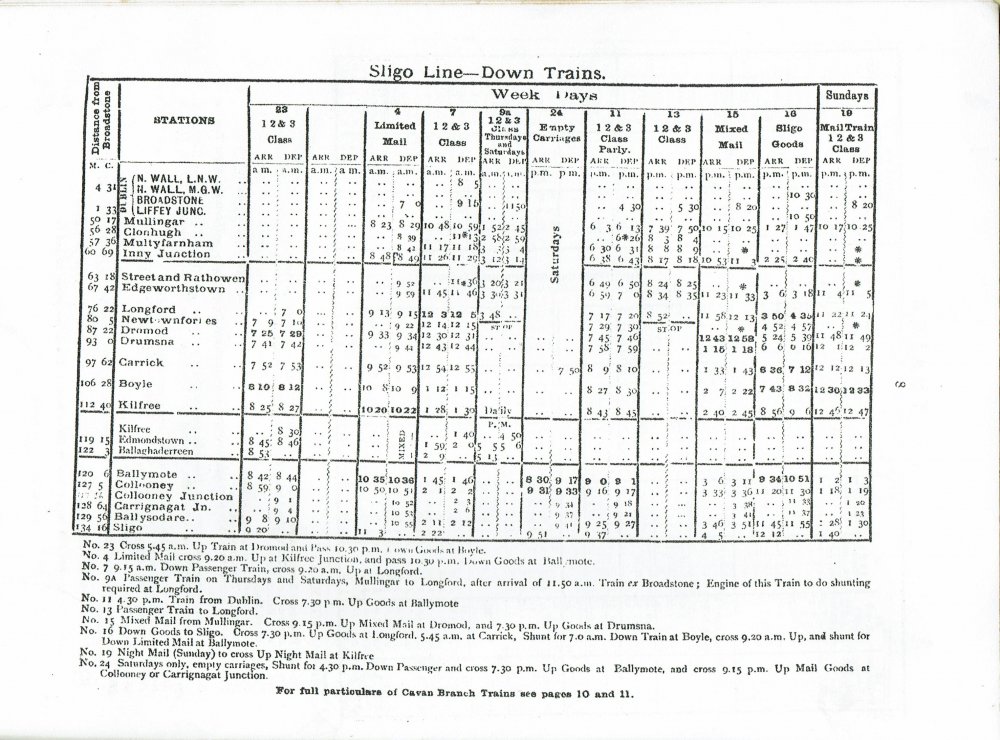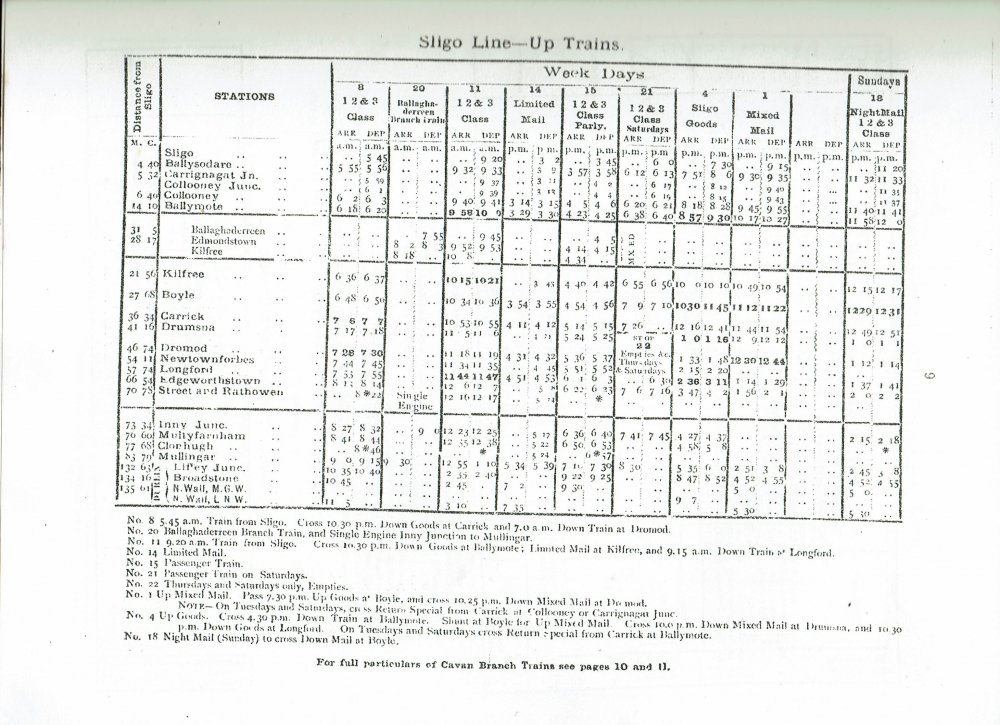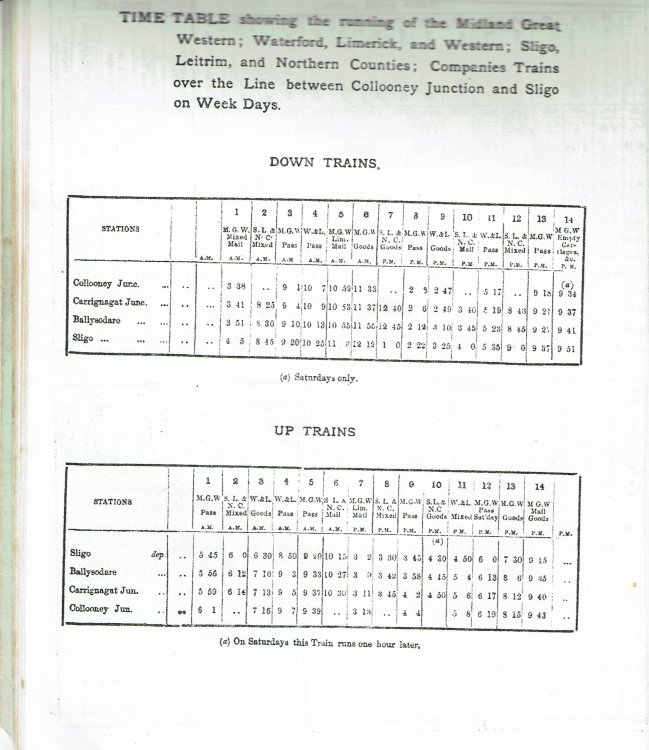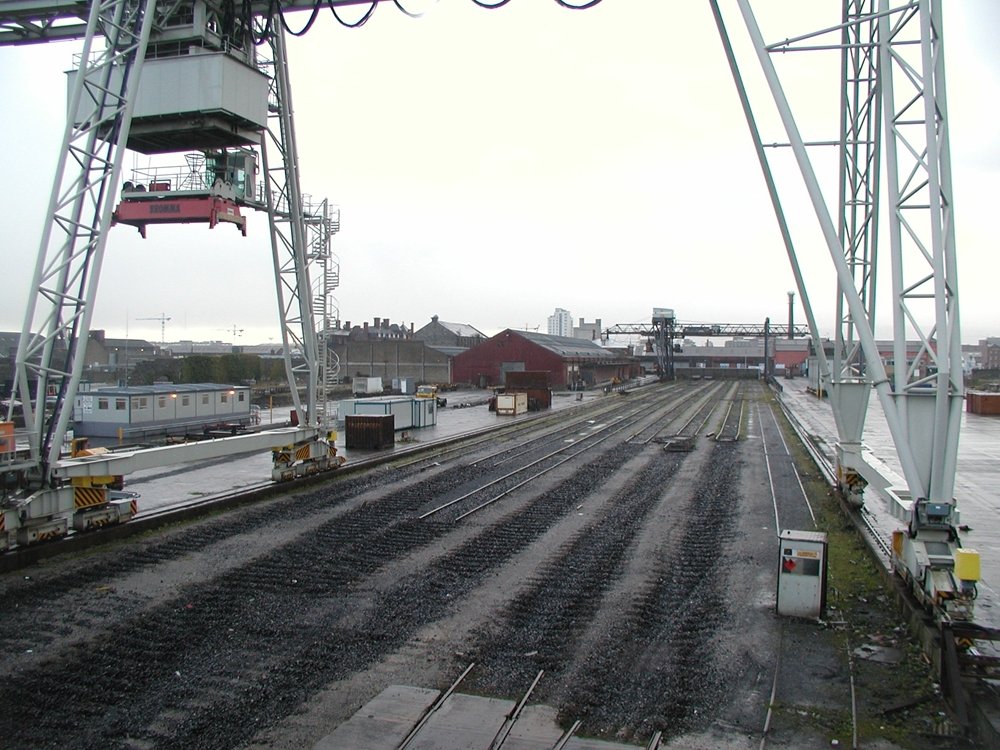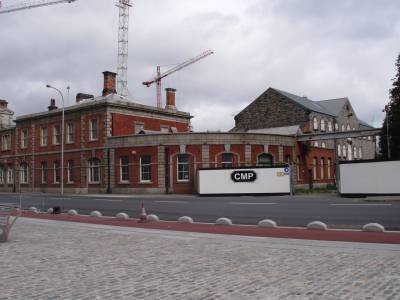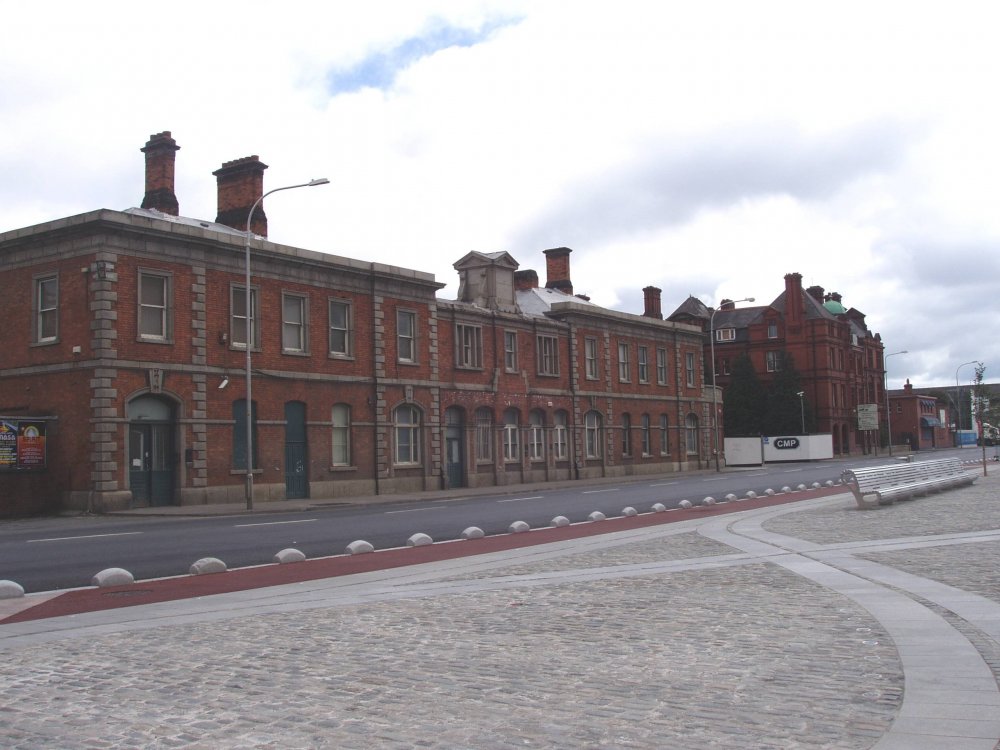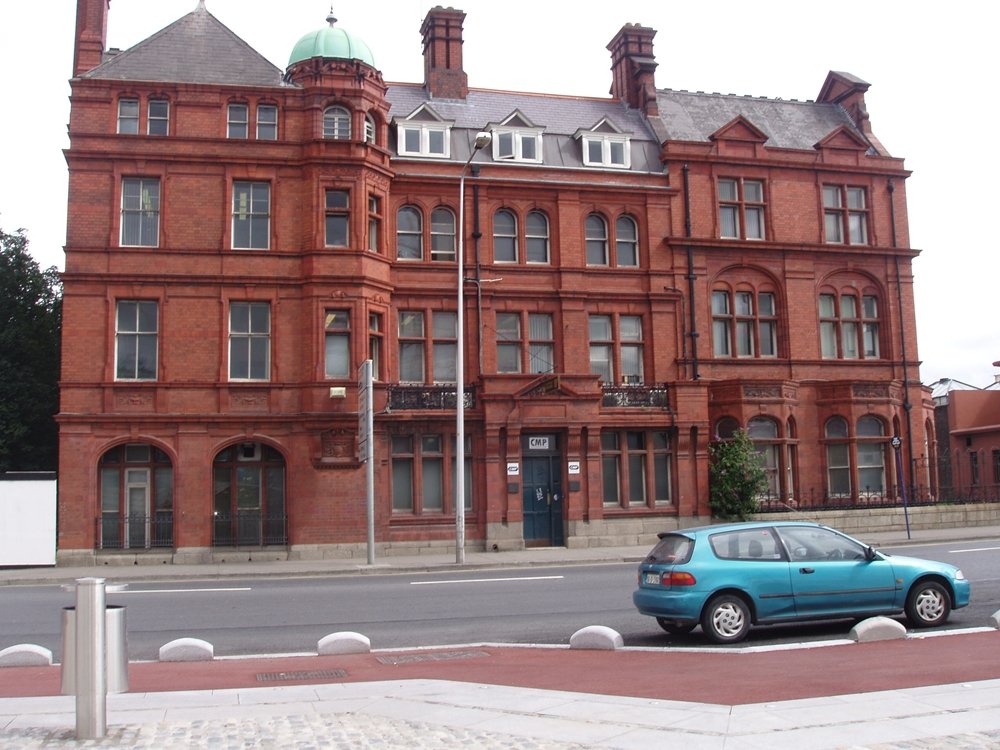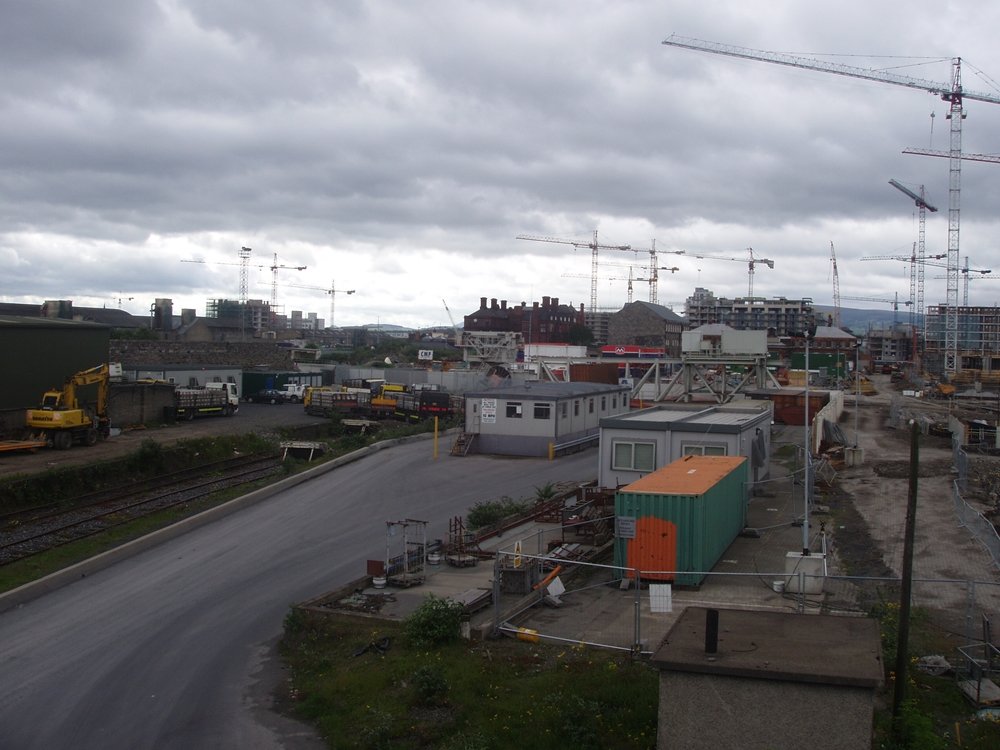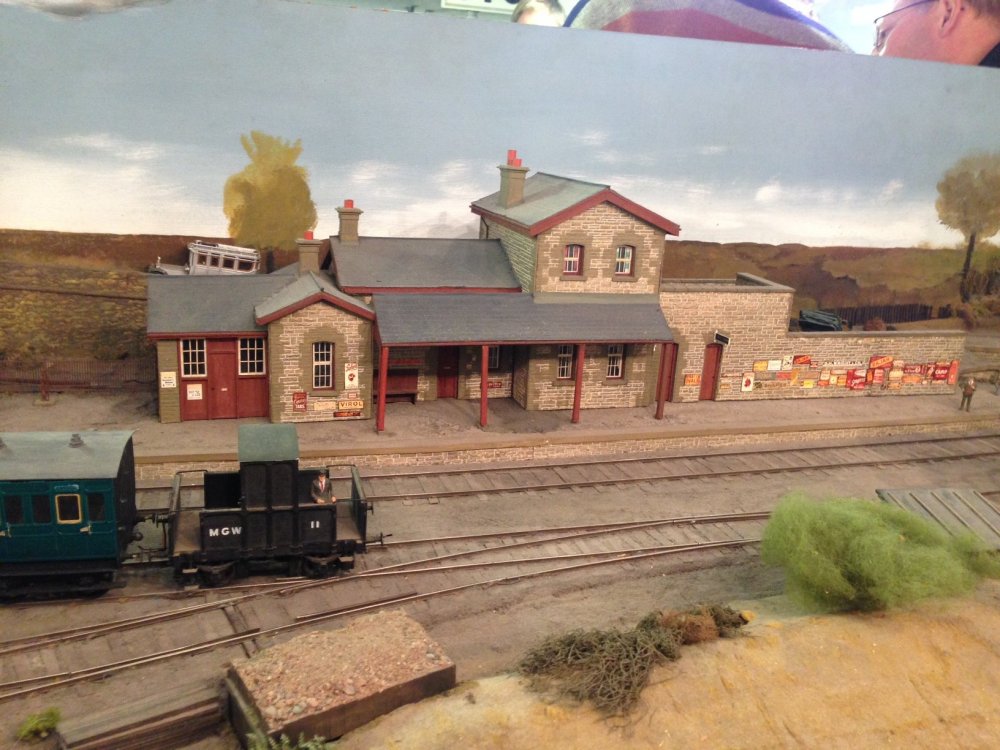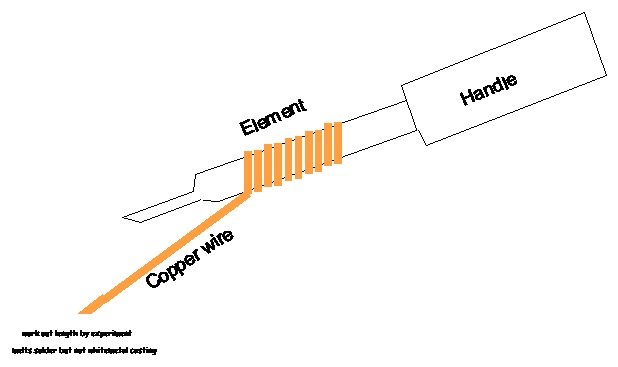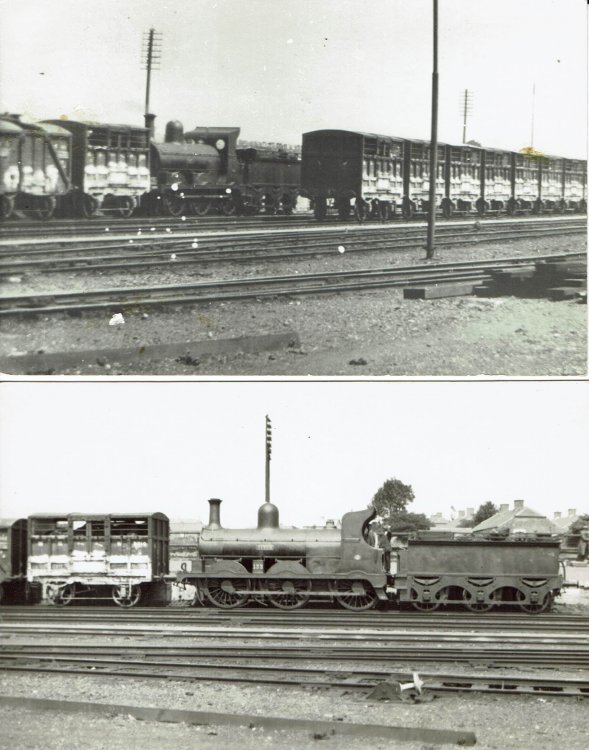-
Posts
4,862 -
Joined
-
Last visited
-
Days Won
119
Content Type
Profiles
Forums
Events
Gallery
Blogs
Store
Community Map
Everything posted by Mayner
-
Funnily enough the late Bob Clements the authority on MGWR locos told me he considered the X Boiler Midland Standard Goods to be GSR locomotives. The L Class were re-built with conventional cabs and belpair boilers in the early 1900s and looked quite different from the Lm & Ln sub-classes which retained their Atock features. Most of the L & Lm class boilers would have been due for replacement by the 1930s and most of the 573 & 594 Class 0-6-0s were rebuilt with X Superheated boilers All of the Ln or 563 class with the exception of 567 Duke were scrapped in the 1920s, 567 had been re-built as a prototype for modernising the Midland Standard goods and although considered to be 'very good" by Inchacore no further Standard Goods were re-built to a similar standard. Post 1903-4 MGWR L Class 0-6-0 Pre- 1903-4 L Class 0-6-0 ln 567/J16 at Athboy
-
The L Class were built with low sided tenders with inside springs like 509, some members of the class retained their original tenders through their various re-building though some locos later received larger tenders from scrapped locos. 605 and 610 received larger tenders in later years apparently from scrapped Cusach A & C Class 4-4-0s & B Class 0-6-0s, the larger tenders may have been to provide greater water capacity for working the Ballina Goods west of Athlone. The train ran as a fast goods calling only at the larger stations on the Mayo Line, a Cattle Engine worked the slower Westport Goods which called at all stations west of Athlone taking about 12 hours to reach its destination from Athlone. Oddly 609 has a more rounded cab cut outline than the more angular outline of other members of the class.
-
Go back to pre-amalgamation days and general goods traffic between the SLNCR & GSWR/WLWR was interchanged at Collooney South via the "Southern Siding" rather than intermittent use for through cattle traffic in GSR days and wagon storage after 1944. The Interestingly the Southern Siding was owned by the WLWR and its successors and the track at least south of the MGWR underbridge remained in place until the "Southern Yard" was lifted. Collooney seems to have been a major originating point in its own right for export cattle traffic via the SLNCR and Midland Sligo Line. CIE introduced a nightly "Shipping Special" to handle increased cattle traffic on the Sligo line following the closure of the SLNCR with most of the traffic originating from Collooney Midland rather than Sligo Quay the station continued to handle cattle traffic into the mid 1970s although Collooney Southern was closed and the yard disconnected by the mid 1970s. Collooney Southern or SLNCR would make excellent models for an American walk around style layout but would be challenging to find a home unless you have a double garage or American style basement
-
Funnily enough I though CIE had bought some GW Toad brake vans when I first saw a CIE ballast train in the early 70s. The Triang-Hornby vans are ideal for your period as the old style GSWR & possibly GNR vans were the only plough brakes in service until the new steel bodied brakes were introduced in the late 70s and would have run with the new ballast hoppers (IRM Model) introduced in the early 70s. The Triang-Hornby GW van with its two side windows looks very close to the old GSWR brakes, the only thing missing is an Oil lamp on the roof (like a MGWR 6w coach) and the big "ships wheel" on the veranda for lowering and raising the plough. They tended to look quite decrepit in service weathered planking and faded steel sheeting. There is a photo of 8452 in the 79 version of Locomotives and Rolling Stock of CIE & NIR, main difference from the Triang model is the veranda is planked and the van part sheeted in iron.
-
Holy moley! Three southbound passenger trains and a goods daily over the Burma Road in the 1930WTT , a far cry from the single Limerick-Sligo passenger during CIE days. There are several photos of ex-MGWR C or GSR D6& D7 Class 4-4-0s in addition to the 2-4-0s on Sligo Road passenger trains in GSR days, train consists appear to be short 3-4 coaches and the mandatory tail of non-passenger coaching stock & vans. The ex MGWR F or GSR J5 "Cattle Engine" and Woolwich Moguls appear to have worked the heavier through goods from Dublin and the various ex-MGWR Standard Goods (GSR J18 & 19) handled the lighter goods trains. Most of the ex-WLWR 0-6-0 goods locos were still in service and may have worked north of Tuam to Sligo, there are photos of ex-GSWR "Kerry Bogies" & 52 Class 4-4-0s on Limerick Sligo passenger trains, its just about possible that an ex-WLWR 4-4-2T or 0-4-4T may have worked the Sligo-Tuam passenger train. I don't know if anyone does a Woolwich or a Southern N Class in N Scale, an ex-WLWR 0-6-0 or WLWR tank loco would be a simpler proposition for a scratch build in any scale than a Midland or GSWR loco having a simpler outline with a straight running board. The WLWR 0-6-0s are said to be close to the GWR Dean Goods its just about possible that some may have retained their original Belpair boiler in GSR days. This Sligo thread seems to becoming more infectious that a certain virus, I have been planning to build a Burma or Mayo Road layout for the past 20 years, but Ballysodare-Sligo would give me a plausible excuse to run my collection of GNR, Southern and Midland locos and stock& CIE diesels on the one layout.
-
CIEs first diesel proposal was heavily influenced heavily by a visit senior management possibly the Chairman & General Manager to the United States and included a single ended diesel locomotive and a luxury diesel tourist train. The American visit and a drive for economy may have influenced CIEs operating methods from the late 1940s to the 70s with many main line services down to one or two passenger/mail trains daily in contrast to the more frequent passenger services under GSR management & the 1946-7 timetable. Its possible that the tourist train may have been influenced by some of the American Streamliners of the 1940s. Its possible the Chairman (ex DUTC?) after his visit to America had the vision of a single daily "Streamliner" setting out from Kingsbridge for Cork with an A and possibly a couple of B units and stainless steel coaches, with through cars for Waterford, Cork Limerick and Tralee, before being brought back to reality by scarce post war resources and dwindling passenger traffic. The delay in implementing the diesel programme and decision to build the first diesel locos at Inchacore was mainly due to the lack of capacity of the British locomotive builders and shortage of raw materials. The engineers at Inchacore basically got it right with the selection of a Sulzer engine and Metrovicks electrical equipment for 1100 & 1101 but the locos were let down by the use of plate frame bogies which were rough riding not unlike similar bogies used in the Southern Diesels, EE Type 4 & Peaks. At the time decision to use plate frame rather than the more satisfactory cast steel bogies used in the LMS Twins and American locos may have been forced on CIE by supply problems and cost with setting up to produce a small number of broad gauge bogies. Has anyone an artists image or a drawing of the proposed twin-engined Sulzers? The twin-engined diesels and diesel Tourist Train are two of the most intriguing might of beens on Irish Railways.
-
Relevant sections from 1897 MGWR WTT, there are unlikely to been significant changes in train workings and frequency until services were cut back during the Emergency
-
Love the chicken rooting around behind the distinctive Irish gate. Domestic animals and wildlife are great for keeping the viewers interested on small point to point exhibition layouts, the viewers were more interested in finding counting the birds, rabbits and other small animals than watching the trains on a layout I exhibited at a MRSI Dublin exhibition many years ago
-

Sligo, Leitrim & Northern Counties Rly Beyer Garratt drawing.
Mayner replied to Irishswissernie's topic in General Chat
Harry Mulhollands O Gauge Garratt is certainly an impressive loco. I think the Garratt was mentioned in Neil Spinks book, the theory appears to have been to reduce train mileage with one Garratt hauled train in each direction handling all the goods traffic rather than usual two loco hauled trains daily. The SLNCR did not have the money to buy new locos and had to make do and mend with second hand GNR(I) locos for the best part of 30 years until the supply of suitable locos dried up in the late 1940s. Lough Erne and Lough Melvin appeared to have been ordered without the SLNCR having the money to pay for them and were eventually delivered on hire-purchase with the Northern Ireland Government as guarantor. How a Garratt would have fared on a typical "soft Irish day" on the steeply graded and twisty SLNCR is an interesting question as they have a reputation of being slippery in damp conditions with each engine unit slipping in turn as it took up the load. How would the drawgear on the wooden framed Irish Standard wagons used in GNR(I) & SLNCR wagons have stood up to Garratt haulage. The NZRs trio of Garratt locomotives were rapidly converted to 4-6-2 tender engines as a result of problems with slipping and pulling the drawgear out of wagons on the steeply graded twisting central section of New Zealands North Island Trunk Line. -
Outside JHBs late 1930s time period but a useful overview of the LNWR station and Holyhead Yard. It would have been difficult to get a decent view of the station and hotel from the North or South Quays as the area (The Campshires) was occupied by large rather brick storage sheds. North Wall Holyhead Yard late 2003. Remains of LNWR train shed and station red building on left distance. New IE Container Terminal offices in new temporary office complex on approaches to LNWR station at left. LNWR Hotel large building with chimneys and dormer windows in left distance. Chester & Holyhead Railway Wool Store large stone building between station and hotel. View from the same vantage point July 2005. Remains of LNWR Train Shed removed rear of LNWR station red brick building visible in distance. Remains of approach roads to LNWR station in use as shunting neck to allow trains from the Belfast Line and North Dublin Loop Line to reverse into the temporary container terminal in the Midland Yard All cleaned up LNWR station and restored Wool Store from North Wall Quay LNWR Station and Hotel. This photo would have been almost impossible a couple of years earlier as most of this section of the quay or Campshires was covered with large brick sheds LNWR Hotel facade cleaned and renovated. For many years the brickwork on this building had weathered to a dark purple similar to GSWR purple lake! The line linking the Interlink linking the Northern & South Western Lines will pass beneath this area and the Liffey if it ever gets built.
-
Arnold is exclusively N Gauge
-
The Plough Vans were introduced in 1904 for use with the new ballast hopper trains Padraic O'Cuimin notes in Wagon Stock of the MGWR that 4 Ballast Vans 42,43,46&48 were introduced in 1883 one of which 232A was in Departmental service in 1970. A number of GSWR Ballast Brakes from the same period survived into the 1960s in use of lifting trains, they were long wheelbase outside framed vehicles with a birdcage look out at one end and a large compartment for accommodating the men and their tools, possibly doubling as a mess and sleeping van. The 1883 Ballast Vans are not listed in POC's list of MGWR GAs drawings and diagrams and do not appear in the IRRS Compendium of MGWR Goods Vehicle Drawings. Intriguingly his schedule of drawings includes a Diagram which he prepared of a 1874 ballast wagon with "Guards Compartment" in . It might be worth asking Richard McLaughlin whether POCs personal MGWR archive was bequeated to the IRRS. Richard Chowan's No 11 may be a model of one of the Incline Brake Vans built by Metropolitan for the MGW in 1883, POC had no particulars of their appearance but they were listed as 1 compartment 4 wheel vehicles.
- 309 replies
-
- 4
-

-

-
- mgwr
- 21mm gauge
-
(and 1 more)
Tagged with:
-
If you intend to solder SSM whitemetal wagon kits, you will need a low melting point 70°C or 100°C solder, a suitable flux & a temperature controlled soldering iron https://eileensemporium.com/index.php?option=com_hikashop&ctrl=category&task=listing&cid=1125&name=brass-3&Itemid=189, as there is a real risk of melting the castings. 145°C from Eileenn's, Carrs or DCC Concepts in conjunction with a phosphoric flux is the best option for soldering brass or nickle silver I would recommend Carrs or DCC Concepts 100°C solder as its less hazardous than 70°C which usually contains cadmium which is more dangerous than lead, 100°C also has advantages in soldering whitemetal to brass, however you solder make sure that you have good ventilation as solder and flux fumes are quite hazardous to health it possible to set up an ordinary soldering iron to solder whitemetal by wrapping thick copper wire around the element and establishing the length of the new tip by trial and error A less risk alternative until you have mastered soldering is to use superglue or a 5minute epoxy. Whether you glue or solder of the great advantages of whitemetal is that its very easy to dismantle the kit if you are not happy with the result. You can dismantle a soldered kit by placing it in boiling water and paint stripper has a similar effect on superglue or epoxy.
-
I think Mike is referring to this one The vents or whatever their purpose were a standard detail on MGWR Standard Covered Wagons and would have been very small for unloading grain. Its just about possible bulk grain was carried in these wagons and discharged through the doors, just as boxcars were used in the States & Canada up to the widespread introduction of grain hoppers in the 1980s. http://catalogue.nli.ie/Search/Results?lookfor=ballysadare+mill&type=AllFields&submit=FIND&filter[]=authorStr%3A"French%2C+Robert%2C+1841-1917+photographer"&filter[]=format%3A"Photo"&filter[]=digitised%3A"Digitised" The overhead gantry above the sidings at Ballysadare opens up all sorts of interesting possibilities.
- 309 replies
-
- 1
-

-
- mgwr
- 21mm gauge
-
(and 1 more)
Tagged with:
-
Although the traffic was fish rather than coal Richies Plan reminds me of Iain Rice's Gairloch plan in Light Railway design, though it also reminds me of Torpoint, Craig and Madder Port all great examples of railway and harbour modelling. While there is nothing really similar within an Irish context of shipping coal by sea, there were a couple of might have-beens to ship iron ore and coal from small harbours in County Antrim including a steeply graded line involving loops and switch backs from the Antrim Plateau to a pier in Redbay near Cushendun. The Antrim mining railways were narrow gauge, but who is to say they could have been to a broader gauge and worked as self contained systems like the slate railways in North Wales. Although O Gauge PGHs Rm Web thread "MOVING COAL" a Colliery Layout contains practical solutions for loading and unloading coal on a model railway and might even inspire you to even try O Gauge https://www.rmweb.co.uk/community/index.php?/topic/76110-moving-coal-a-colliery-layout-in-0-gauge/page/9/
-
Richard Chown modelled Castlerackrent as WLWR rather than the MGWR railway apparently because of the availability of British builders drawings from museums and societies like the HMRS. The GSWR & MGWR built most of their locos and stock from the 1870s onwards while the smaller companies like the W&L and CBSCR bought most of their locos and stock from British builders.
- 309 replies
-
- 2
-

-
- mgwr
- 21mm gauge
-
(and 1 more)
Tagged with:
-
David sent me some some photos which I have somewhere but cannot find, not much progress on the layout in recent years just an open frame baseboard with a raised trackbed, some track laid, a Sligo Road station building and a signal box. The buildings appear in one of the MRD articles.
- 309 replies
-
- 3
-

-
- mgwr
- 21mm gauge
-
(and 1 more)
Tagged with:
-
The MGWR covered cattle wagons were quite different in design to other companies cattle wagons and made up a relatively small proportion of the livestock carrying fleet with over 1613 Convertible & 450 Covered cattle wagons in service in 1924. Some of the cattle wagons were vacuum piped and later fitted with vacuum brake gear which indicates that they are likely to have been used for urgent traffic running in passenger and mail trains. The Midland tended to go through phases of rebuilding open cattle wagons as standard covered wagons, eliminating the type by 1885 then building small batches between 1885 & 1895. Unfortunately I have been unable to find a good close up photos of the MGWR covered cattle wagons or find a drawing or photo of the open cattle wagons. Upper photo un-credited, lower photo ©L&GRP 22486 Loco No133 "Titian" both photos appear to have been taken at the same location on the same day. Jack Kennedy's photo of 129 "Celtic" one of the MGWRs largest and most prestigious main line passenger loco on a cattle train at Athenry illustrates the relative importance of cattle traffic on the Midland compared to other Irish railways, as Jack once commented the MGWR would not have been interested in "The High Speed Train" (IC125) unless it was capable of hauling a cattle train. The Midlands express passenger locos had relatively small 6'3" driving wheels compared to similar GSWR & GNR locos to improve their ability to haul mail and cattle trains, the D & K Class 2-4-0s & F Class 0-6-0s were true mixed traffic engines with 5'8" driving wheels similar in concept to the Scottish "Intermediate" 4-4-0s similar to the North British "Glen Class" & Highland "Loch" Class. Nice to see the photo of the 1898 MGWR Guinness Wagon, these were basically a lengthened hard topped version of the Standard Covered Wagon or convertible. Some of the more modern 10T covered wagons introduced for Guinness traffic in 1915 may have carried Guinness labelling, these wagons were similar in appearance to the Irish Railway Clearing House standard covered wagons used by the GNR(I) & SLNCR and the Provincial Wagons kits.
- 309 replies
-
- 6
-

-

-
- mgwr
- 21mm gauge
-
(and 1 more)
Tagged with:
-
Using loose coal would be become increasingly dusty and dirty and may lead to problems with poor reliability, on one exhibition layout that used real coal, the coal turned to dust as the exhibition went and the operators started to look like miners coming off shift in need of a bath. I once had a layout with working overhead iron ore loading bins, the ore( a Woodlands Scenics coarse ballast)started to break up and jam the mechanism, in the end we had to use small hand held scoops to load the wagons, unloading was off scene! One common dodge on layouts with coal mines or power stations is to have one train of loaded and one train of empty wagons running in opposite directions with the mine and covered unloading building on opposite sides of a view-blocker or backscene.
-
There is an interesting account of the incident in the July 2019 IRRS Journal and in N J Spink's "The Sligo Leitrim and Northern Counties" book, the train which ran as a special from Enniskillen to Greenore was made up of 4 SLNCR & 2 GSWR 3rd class coaches and a GNR van from Enniskillen. At the time the SLNCR braking system was incompatible with the automatic vacuum brake system used by the GNR & GSWR. Interestingly no brake tests were carried out when locomotive changes were carried out at Enniskillen and Dundalk not unlike the recent "Caledonian Sleeper" incident when the train ran away on the approach to Edinburgh Waverley Station.
-
Completed well nearly! a second OO gauge 2-4-0 No33 Arrow in late MGWR condition. I originally assembled the locos as one of the final test builds for the kit in Oct 18 and decided to motorise the loco in OO. Hopefully I will get around to motorising the second test build as 663 and assemble a 21mm gauge chassis for Arrow at some stage. Before the arrival of larger locomotive the 2-4-0s usually double headed the "Mails" between Broadstone and Mullingar and regularly double headed heavy excursion trains in GSR & CIE days. I think I prefer grey to black for steam locos!
-
Nohab was the major European supplier of EMD powered locos in the 50s and 60s. The double cabbed Nohab like the NSB Di3 was basically the European equivalent of the EMD F7, Clyde Engineering produced similar locos in Australia. Interestingly Nohab tendered to supply diesel locomotives to the GNR(B) and possibly CIE, but would have been too heavy and too expensive at the time. The Victorian Railways B Class are probably close to what a Nohab loco could have looked at in GNR(B) colours https://www.victorianrailways.net/motive power/bdiesel/bdie.html
-

Broadstone Models 7mm GNRI Cattle Wagons
Mayner replied to decauville1126's question in Questions & Answers
Paul Greene is a member of this newsgroup. Try sending him a personal message or ask Alan O'Rourke New Irish Lines https://newirishlines.org/contact/ editor to forward a message. Paul is the former owner of Studio Scale Models and the builder of the Kilbrandon S Scale Irish Layout http://www.s-scale.org.uk/gallery15.htm -
There were plans at different stages to extend the Ballaghaderreen branch to Ballyhaunis on the Mayo Line which probabably explains the back-to front track layout. A number of MGWR branch line terminals besides Ballaghadrerreen had single road engine sheds including Cavan, Clara, Kingscourt and Killeshandra . There are several good quality photos of Midland section branch line terminals, loco sheds and trains in "Great Southern Railways" an Irish Railway Pictorial by Donal Murray published by Ian Allen 2006.
- 309 replies
-
- mgwr
- 21mm gauge
-
(and 1 more)
Tagged with:
-
NZ turned towards towards US practice mainly because locos were more suited to local conditions and the US builders delivered their locos on time an to spec. The tipping point towards US practice arose when Baldwin quickly supplied an order of standard DRG 60 Class 2-8-0s to ease a locomotive crisis, which arose as a result of the late delivery of an order of similar 2-8-0s from Nasmyth Wilson. The British locos were substantially heavier than specified, the builders attempts to reduce the weight contributed to the delay in delivery and problems in service. The American locos were more suited to NZ "frontier conditions" with cheaply built lines to open up country to settlement and very basic workshop facilities.
.png.c363cdf5c3fb7955cd92a55eb6dbbae0.png)

